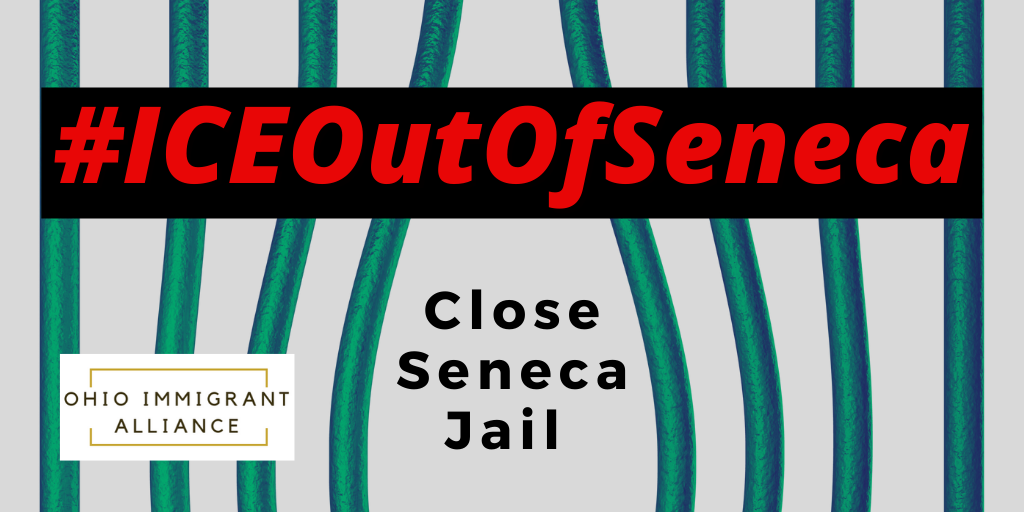Incarceration for profit; profit over people. It’s not just for the private prison industry. All across the United States, county jails are struggling to justify their existence: because putting more people in cages is actually NOT healthy for communities.
So when a county’s tax base and level of criminal offenses allowing incarceration are simply too low to justify the jail’s operation, they turn to other sources of revenue to keep the lights on. And U.S. Immigration and Customs Enforcement (ICE) is waiting in the wings, ready to oblige.
After Morrow County (OH) Sheriff John Hinton was exposed for failing to protect human lives, he lost his ICE cash cow. Since Morrow is one of the least-populated counties in Ohio, Hinton sought new ways to get his roster numbers up and justify his jail’s existence. So he turned inward, on his own community.
Take a look at the Morrow County Jail roster today, and you’ll see a large number of people spending serious time in an ill-equipped county jail because they have drug problems, or violated probation—including more women.
Do the people incarcerated for drug addictions and probation violations need to be in jail, or in an environment where they can recover from addiction, obtain job skills, and contribute to their communities? What is better for them, us, and local taxpayers?
It’s really no contest. But our country’s addiction to incarceration keeps us from asking these rational questions. (Now do you see that addiction is an illness?)
Let’s take Seneca County, Ohio, as another example. This is also one of the least-populated counties in Ohio, home to 55,000 people, compared to Morrow County’s 35,000.
Only 1.2% of Morrow County residents were born in other countries. Seneca County’s immigrant population is double that of Morrow, at a “whopping” 2.1%. Both jails are approximately 100 miles from the state’s only immigration court, in Cleveland. There is no local “justification” for having ICE detention there. It’s simply a revenue raiser.
And Seneca Sheriff Fred Stevens is complaining that he is not getting enough out of ICE. He wants ICE to detain more people in his jail, and pay him more per person, so he can continue to treat them as sub-humans and cash in on the federal payout.
When Butler County’s Sheriff Richard Jones tried to keep ICE profits without providing basic care to detained people, he lost his contract. The same should happen in Seneca.
Seneca’s sheriff pledges to look for more “innovative ideas” like this, to “better serve our citizens,” at the expense of Ohio families from other parts of the state. Families whose loved ones are engaged in court battles with ICE, battles that are winnable because some people do qualify for immigration status under asylum and other laws.
These cases can have life-or-death consequences. Yet Sheriff Stevens is conspiring with ICE to ensure that more Ohioans are locked up in jails, far away from lawyers, loved ones, and the court, making it harder for them to build the evidence and resilience they need to win their cases. With a lawyer, people are 10 times more likely to have a positive outcome. But Stevens doesn’t care about that. He just wants his money.
READ the civil rights complaints filed on behalf of immigrants detained in Seneca County Jail by Freedom For Immigrants, Ohio Immigrant Alliance, and Ohio Immigrant Visitation.
SEE the Midwest edition of 7 Doors: American Gulag. Says Greg Constantine, creator of this photo journalism project: “SEVEN DOORS aims to look beyond the physical architecture of immigration detention. It aims to share not only the darker personal stories of struggle but also the inspiring stories of survival from detention and the efforts being made to find alternatives and combat these unjust policies.”
READ Ohio Immigrant Alliance’s take on racism in U.S. immigration courts and testimony submitted to the House Judiciary Committee, Subcommittee on Immigration, and ACLU article about how ICE deliberately confounds immigrants’ access to counsel.
WATCH this webinar from the Interreligious Task Force on Central America and Colombia (IRTF) about Ohio’s immigration detention landscape and get involved in decarceration efforts.

